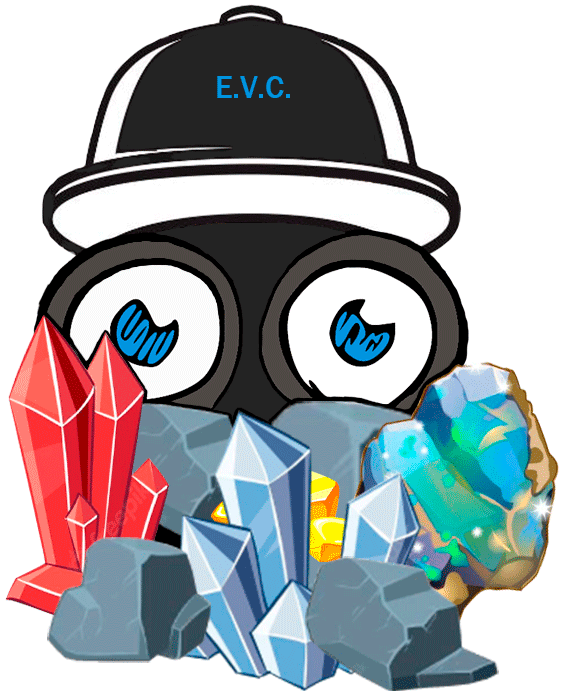The Blue-Ringed Octopus: A Fascinating and Deadly Ocean Dweller
The blue-ringed octopus, belonging to the Hapalochlaena genus, is one of the most captivating and dangerous animals in the ocean. At first glance, its small size and vibrant blue rings may seem harmless, but behind that beauty lies one of the most poisonous creatures in the marine world. In this article, we will explore in detail the characteristics of this fascinating cephalopod, the different types of blue-ringed octopuses, curiosities about their behavior and biology, their venomous properties, and where they can be found in nature.

Curiosities
The blue-ringed octopus is not only fascinating for its appearance, but also for its surprising adaptations and behaviors:
- Expert Camouflage: These octopuses have the ability to change the color and texture of their skin to blend in with their surroundings, making them masters of camouflage. Their blue rings only light up as a warning when they feel threatened.
- Lethal Poisons: Despite its small size, the blue-ringed octopus possesses an extremely potent toxin called tetrodotoxin. This venom is strong enough to paralyze and kill an adult human within minutes. Interestingly, tetrodotoxin is not produced directly by the octopus, but by symbiotic bacteria that live in its salivary glands.
- Ingenious Feeding: These octopuses feed mainly on crabs, shrimp and small fish. They use their venom to immobilize their prey before consuming them, injecting it through a quick bite.
- Adaptability: Blue-ringed octopuses are highly adaptable, found in a variety of marine environments, from coral reefs to intertidal pools. This adaptability allows them to survive in various environmental conditions.

Interesting Properties
The blue-ringed octopus is known not only for its lethal venom, but also for other biological properties that make it a fascinating subject of study:
- Neurotoxicity: Tetrodotoxin works by blocking sodium channels in nerve cells, which interferes with the transmission of nerve impulses. This causes muscle paralysis and, in severe cases, death from respiratory failure.
- No Antidote: One of the scariest features of tetrodotoxin is that there is no specific antidote. Treatment for a bite involves life support, such as assisted ventilation, until the body clears the venom naturally.
- Small but Dangerous: Although the blue-ringed octopus rarely attacks humans and prefers to avoid contact, its diminutive size, no larger than 20 cm with tentacles extended, is deceptive in relation to the potency of its venom.
- Remarkable Intelligence: Blue-ringed octopuses are extremely intelligent, able to solve complex problems, use tools, and demonstrate learning behaviors.

Types of Blue Ringed Octopus (Hapalochlaena)
There are four recognized species of blue-ringed octopus, all of which share the distinctive feature of bright blue rings that cover their bodies:
Hapalochlaena maculosa: Also known as the southern blue-ringed octopus, it is common in the coastal waters of southern Australia. This is perhaps the best known of its type due to its relatively large size and prominent ring patterns.
- Hapalochlaena maculosa: Also known as the lesser blue-ringed octopus, it is common in the coastal waters of southern Australia. This is perhaps the best known of its type due to its relatively large size and prominent ring patterns.
- Hapalochlaena lunulata: This is the older blue-ringed octopus, with larger, brighter rings. It is found in the waters of the Indo-Pacific, especially around Indonesia and the Philippines.
- Hapalochlaena fasciata: Also called the southern blue-lined octopus, it lives on the coasts of New South Wales, Australia. It is distinguished by its rings that form more marked bands along its body.
- Hapalochlaena nierstraszi: It is the rarest and least studied species. It was first described in 1938 and is known from a single specimen found in the Bay of Bengal.

Where to find it in nature
Blue-ringed octopuses primarily inhabit the temperate and tropical waters of the Indo-Pacific. Its distribution includes:
- Australia: They are commonly found in Australian coastal waters, especially in coral reef areas and in tide pools at low tide.
- Indonesia and the Philippines: These regions are home to Hapalochlaena lunulata, where they often hide in crevices and between rocks on reefs.
- Japan: Although less frequent, they have also been sighted in the coastal waters of Japan.
These octopuses usually inhabit shallow areas, which increases the likelihood of contact with humans, especially divers and swimmers in rocky areas.
An amazing creature
The blue-ringed octopus is one of the most amazing and feared creatures in the ocean. Their showy blue rings, which seem so harmless, are actually a warning of their lethality. Despite its small size, this animal has a venom capable of causing death in minutes, making it an important subject of study for science. Knowing their behavior, the different species that exist and their natural habitat is essential to understanding and respecting this wonderful but dangerous creature. The next time you find yourself near a reef in the Indo-Pacific regions, remember that beauty often comes with a touch of danger.





